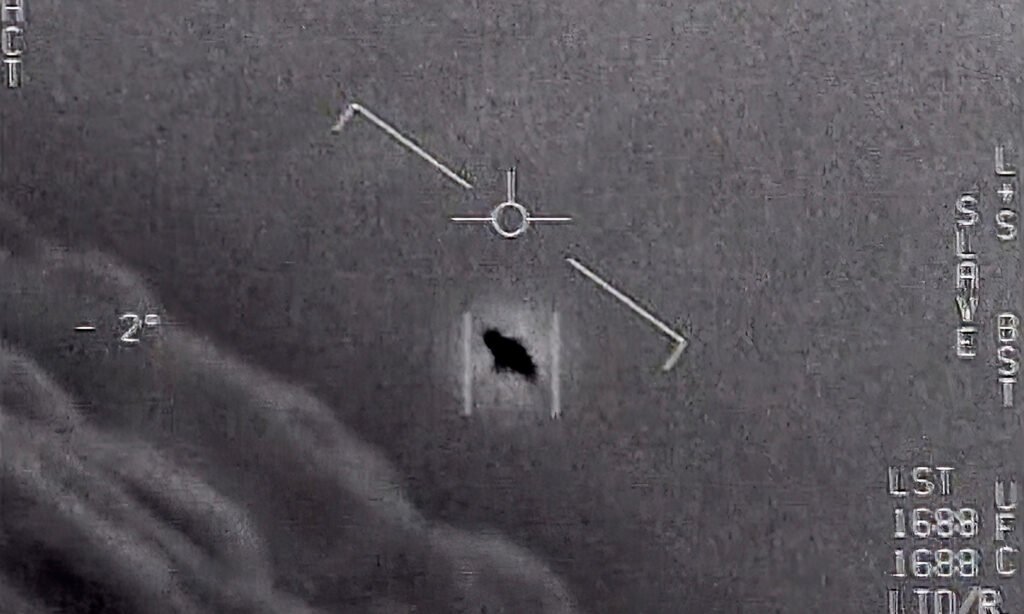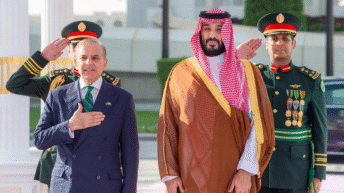
Since the groundbreaking New York Times article in 2017 exposed covert U.S. efforts to investigate Unidentified Anomalous Phenomena (UAPs), significant developments have occurred in the realm of UAPs. After whistleblowers like Luis Elizondo, Ryan Graves, and David Fravor shared their public testimonies, the existence of UAPs and their advanced capabilities gained further credibility. This was solidified by statements from senior government figures, including former Presidents Trump, Obama, and Clinton, acknowledging the reality of UAPs. Notably, former DNI John Ratcliffe, former CIA directors John Brennan and James Woolsey, and NASA Director Bill Nelson, among others, also affirmed this reality.
Additionally, startling bipartisan efforts by congressmen to introduce UAP-related legislation within the National Defense Authorization Acts demonstrate a collective push for transparency. Congress has achieved two enacted legislations (with a third coming soon), two comprehensive reports, three high-level congressional hearings, and a notable NASA report. These collectively underscore the reality that UAPs pose a genuine threat to national security and civil aviation, demanding scrutiny globally.
Trump’s 2020 Covid Relief Act mandates the Director of National Intelligence and Secretary of Defense to work on a report detailing everything the government knows about UAPs. Deputy Secretary of Defense David L. Norquist authorized the UAP Task Force in August 2020, focusing on UAP comprehension and national security. The DNI’s 2021 report covered 144 military-reported UAP incidents, with 143 unexplained. Advanced UAP attributes, including anti-gravity, rapid agility, hypersonic speeds, and low observability, raised concerns about national security and aviation safety. The report pretty much ruled out the US, Russia and China as the source of UAPs.
The inadequacy of prior investigative agencies soon led to the creation of the All Domain Anomaly Resolution Office (AARO) under Dr. Sean Kirkpatrick. In January 2023, the DNI’s second report analyzed 510 UAP cases, with 171 unexplained. Dr. Kirkpatrick testified before the Senate Armed Services Committee in April 2023, highlighting consistent round or spherical UAP sightings at 10,000 to 30,000 feet without visible exhaust and propulsion. At NASA’s Public discussion with their UAP Panel, Dr. Kirkpatrick revealed Pentagon collaboration with ‘Five Eyes’ intelligence partners and the FAA’s increasing UAP reports.
In 2023, David Grusch, a former high level Intelligence official, made startling claims of a covert UAP recovery and reverse engineering program involving the US and allies dating back to pre-World War II years. Grusch’s experience and contributions to the NDAA 2023’s provisions for whistleblower protection lent credibility to his assertions, which included governmental UAP possession, strategic reverse engineering, disinformation campaigns, budget misappropriation, private contractor involvement, biological sample recovery, and fatal consequences for breaches of secrecy. Grusch’s claims were corroborated by some forty other intelligence officials, both active and retired, with the Inspector General deeming his complaint “credible and urgent”. Grusch presented these facts to the US Congress live on TV in a sworn testimony, resulting in worldwide publicity and Congress preparing for potential confrontations with elements of the deep state. Michael Shellenberger and Senator Marco Rubio have revealed that several more witnesses have taken Grusch’s route to provide disclosures protected from official sanctions to the US Congress and the ICIG.
In July 2023, Senate Majority Leader Chuck Schumer proposed the UAP Disclosure Act of 2023, an amendment to the 2024 NDAA. Inspired by the JFK Assassination Records Collection Act of 1992, this legislation aims to bring transparency to UAP matters. Key provisions include acknowledgment of undisclosed UAP documents, addressing misuse of national security provisions, forming an Expert Review Board for declassifying UAP records, a presumption of declassification for UAP-related documents, prohibiting document alteration or destruction, comprehensive definitions, a Controlled Disclosure Campaign Plan, access to witnesses, disclosure of sealed materials, and urging executive agency cooperation. This legislation seeks to unveil long-held secrets surrounding UAPs, and Schumer’s amendment defined and acknowledged important terms such as “non-human intelligence” and the capabilities of UAPs.
Significantly, it also declared “eminent domain” over recovered UAP tech and biological materials that may be present in the hands of private military contractors like Lockheed, EG&G, and others, while giving specific deadlines for these players to disclose all the information and exotic materials they possess. While the UAP Disclosure Act is yet to be passed by the House of Representatives, it marks a significant shift in Congress Policy towards the UAP issue, which India needs to be aware of.
Impacts on India:
India is grappling with significant and multifaceted challenges stemming from the UAP phenomenon, making it imperative to address the issue comprehensively. Even if we ignore the reality of intelligent contact with humanity, there still remain significant geopolitical concerns of national security and strategic autonomy.
For over two decades, the Indo-Tibetan Border Police (ITBP), have consistently reported UAP sightings. Despite these reports and the efforts of various government agencies to investigate these objects, the National Technical Research Organisation (NTRO) and the Defence Research Development Organisation (DRDO) have allegedly failed to identify them. Retired IAF Chief Air Chief Marshal P.V. Naik rightly emphasises the importance of conducting investigations into the possible deployment of new technologies in these sightings in order to identify the true nature of these unidentified objects. Failure to do so is concerning, according to him, as it leaves our armed forces unprepared and at risk of misidentifying them for adversary nations.
India is lagging significantly behind other nations in addressing the UAP issue. Legislators have not discussed the matter in Parliament, leaving many in the dark about the phenomenon. Responses to Right of Information queries indicate that even political and diplomatic authorities may be unaware of the situation, as they claim to have no documents or information on the issue. India’s lack of a permanent office for UAP investigations places it behind countries like China, France, the U.S., as well as developing nations like Brazil, Uruguay, and Chile.
Furthermore, many of the RTIs which are directed to specific bodies, are re-routed to ISRO which claims it doesn’t study or archive such phenomena. Paradoxically, NASA’s recent UAP report has pointed to collaboration with ISRO in the NASA-ISRO Synthetic Aperture Radar (NISAR) mission as holding immense promise. NISAR’s exceptional resolution will provide invaluable radar data for direct examination of UAPs and their environmental context (on which US and other geospatial reconnaissance agencies have accumulated vast amounts of technical information). It will offer critical validation for anomalous properties, such as rapid acceleration or high-G maneuvers, through the Doppler signatures they produce.
This attitude leaves India at a disadvantage compared to major powers like the U.S. and China, which are rumored to be far ahead in the study and reverse engineering of UAPs. David Grusch’s claims about a secret UAP arms race involving the U.S., its allies, and adversaries raise concerns. Manitoba MP Larry Maguire’s letter to Canadian Defense Minister Anita Anand corroborated Grusch’s assertions, as well as collaboration on the matter between the Five Eyes. For India, the only thing worse than a UAP arms race is a UAP arms race which would leave the country out, placing her at a significant military and intelligence disadvantage and potentially jeopardising her strategic autonomy.
The United States Navy, with the involvement of scientist Salvatore Pais, successfully secured patents for unconventional technologies bearing a striking resemblance to those observed in UAPs. Initially, these patents faced rejection from the Patents Clerk. However, they were ultimately granted following the US Navy’s persistent argument that China had already acquired similar techs, and that the US possessed functional prototypes. If India continues to ignore the issue, it risks falling further behind these nations and being forced to balance or bandwagon with countries that have had a head start. Delaying action could also lead to India’s exclusion from a future UAP technology Non-Proliferation Treaty, leaving her to play catch up again.
To address these challenges, India must establish a permanent body for UAP research under the Defence Ministry like the US and UK or under ISRO, on the French model. India must introduce protocols for military and civilian reports while synchronizing her land, sea and space surveillance capabilities to give her eyes across domains. Given India’s ancient civilization, and the long history of UAP sightings, there is a possibility of UAP-related artifacts lying within its soil and waters. If future diplomatic efforts for demilitarisation of UAP tech and an equitable international knowledge sharing programme fail, research efforts should aim to recover these UAPs in India’s strategic interests.
India can improve her participation in this subject by actively hosting international UAP conferences, as well as by sending its representatives to major scientific UAP conferences such as the ones held by CNES (France) and the SCUS (USA). By absorbing data from experienced global researchers, India can quickly catch up. Interestingly, many UAP researchers consider India to hold a treasure trove of information regarding the historical and ‘supernatural’ aspects of the phenomena which are often clubbed under the heading of “high strangeness”. Thus, India may actually hold crucial pieces of the puzzle that will eventually help the human species unlock the secrets of this enigma.
Indeed, the implications discussed here only begin to scratch the surface of the extensive challenges that India confronts in relation to the UAP enigma. Nevertheless, taking swift and strategic action in this domain is imperative in the national interest. Furthermore, such an initiative has the potential to position India as a paragon for UAP-related research. It is not only essential but also urgent, holding the key to ushering the people of India into the “Amrit Kaal,” where India can aspire to take the lead on multiple fronts in the international arena.






Add comment